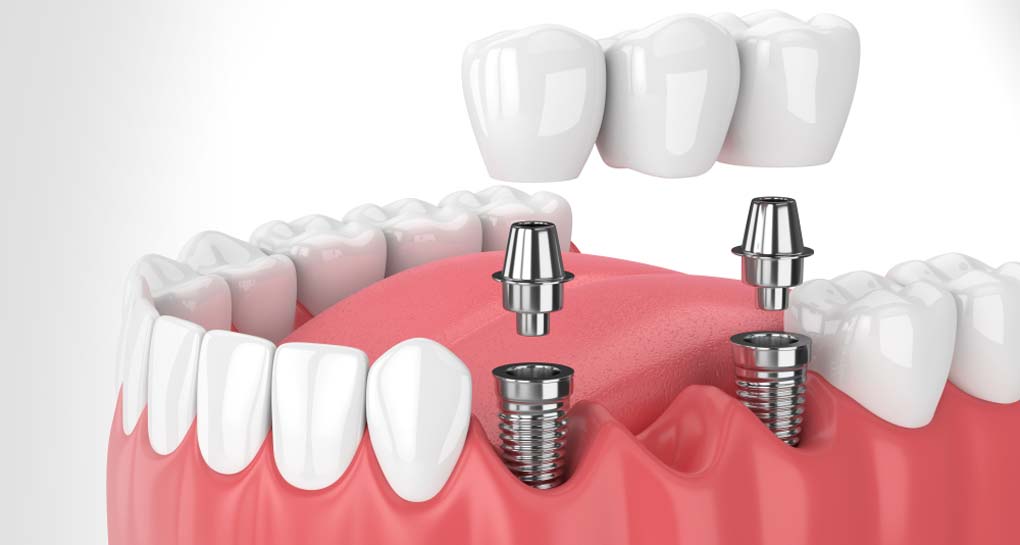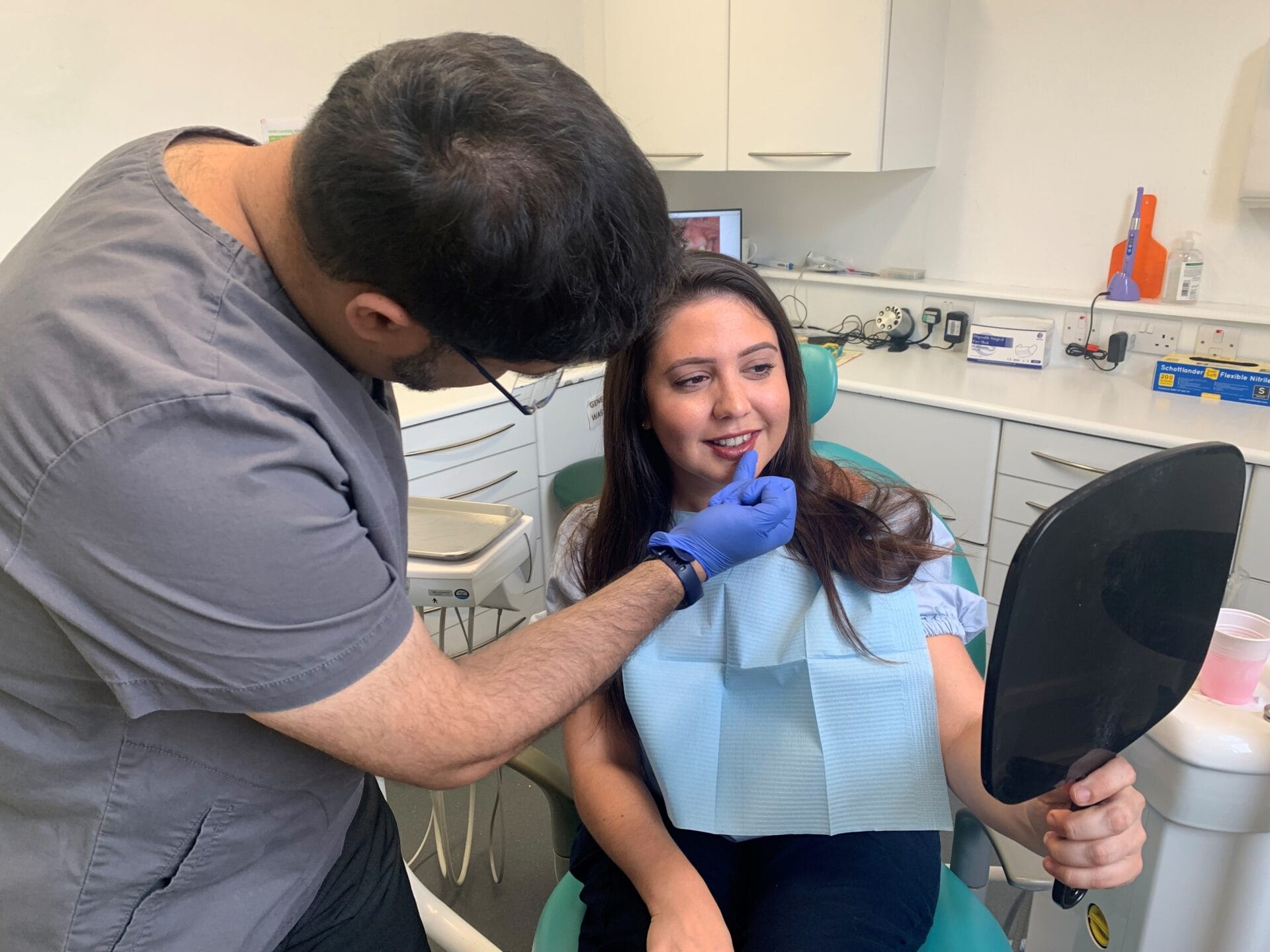Your Overview to Dental Implants Kent: Recover Your Dental Health And Wellness
Your Overview to Dental Implants Kent: Recover Your Dental Health And Wellness
Blog Article
Experience the Most Current Technologies in Dental Implants Modern Technology
As the field of dentistry proceeds to evolve, the advancements in dental implant technology have been nothing brief of impressive. From using advanced materials that boost durability to the application of digital imaging for precise placement, these advancements are changing the landscape of dental care. With minimally invasive surgical strategies and the modification abilities of 3D printing, clients currently have access to tailored services that were when unbelievable. The integration of modern technology is changing the functionality of oral implants, guaranteeing enhanced end results and individual contentment.
Advanced Materials for Boosted Resilience
In the world of dental implants modern technology, the combination of innovative products has substantially added to enhancing durability and longevity of these crucial dental prosthetics. The utilization of materials such as titanium alloys, zirconia, and ceramic substances has revolutionized the area by supplying boosted strength, resistance, and biocompatibility to deterioration.
Titanium alloys are extensively made use of in oral implants due to their exceptional strength-to-weight ratio, corrosion resistance, and compatibility with the human body. These alloys make sure the security and long life of the implant by withstanding the forces applied throughout chewing and talking, providing a reputable option for individuals looking for sturdy tooth substitutes.
Zirconia, a sort of ceramic material, has actually obtained popularity for its biocompatibility and natural tooth-like appearance. Its high toughness and resistance to put on make it an appropriate option for oral crowns and bridges, improving the overall aesthetics and capability of the implant.

Digital Imaging for Specific Positioning
The advancement of dental implants technology has better advanced with the integration of digital imaging methods, making certain exact positioning of these prosthetics for optimal useful and visual end results. Digital imaging plays an essential role in the preparation and positioning of oral implants by providing thorough 3D photos of the client's jawbone structure. This technology enables dental professionals to assess bone density, situate vital structures, and prepare the precise placement and angle for dental implant placement with unequaled accuracy.
By making use of digital imaging, dental professionals can develop digital medical overviews that serve as a roadmap during the dental implant placement procedure. These overviews are tailored for every patient, considering their one-of-a-kind composition and the preferred outcome. This degree of accuracy not only improves the success price of oral implant procedures however additionally minimizes the threat of problems.
Furthermore, electronic imaging enables dentists to imagine the last prosthetic repair before the real placement of implants, permitting careful preparation and guaranteeing that the result satisfies the patient's visual assumptions. Generally, the assimilation of digital imaging modern technology has actually changed the area of dental implants, offering patients a more predictable, reliable, and patient-specific therapy approach.

Minimally Invasive Surgical Strategies


Developments in surgical approaches have resulted in the growth of minimally invasive strategies in the area of oral implantology. These techniques aim to minimize injury to the person, reduce recovery times, and enhance overall treatment outcomes. Minimally invasive surgeries include smaller lacerations, specialized tools, and progressed imaging technologies to specifically position dental implants with very little disturbance to bordering tissues.
One trick element of minimally invasive methods is making use of assisted surgical treatment, you could check here where 3D imaging and computer-aided layout software application are utilized to plan the implant placement with fantastic precision. This enables a more predictable outcome and can commonly remove the demand for considerable flap surgery.
Moreover, advancements in materials and dental implant design have additionally added to the success of minimally invasive strategies. Implants with improved surface homes advertise faster osseointegration, minimizing the recovery time required prior to the prosthetic reconstruction can be put.
3D Printing for Customized Solutions
Utilizing 3D printing modern technology in oral implantology permits the production of very personalized solutions customized to private patient demands and anatomical variants. This cutting-edge modern technology enables dental professionals to create and fabricate dental implants with exceptional accuracy and accuracy. By making use of browse around this web-site electronic imaging methods, such as cone beam calculated tomography (CBCT), detailed 3D models of the person's mouth can be generated to lead the implant preparing procedure.
Among the crucial benefits of 3D printing in dental implantology is the ability to create patient-specific implants that perfectly fit the distinct makeup of each individual. This customized technique aids boost the general success and long life of the dental implant by guaranteeing optimal fit and alignment. In addition, 3D printing allows for the manufacturing of complex geometries and detailed frameworks that would be challenging or impossible to attain making use of typical production methods.
Furthermore, 3D printing innovation allows dental professionals to advice simplify the implantation procedure, decreasing surgery time and enhancing general patient experience. With its ability to produce personalized solutions rapidly and successfully, 3D printing is reinventing the area of oral implantology, offering people ingenious treatment options and enhanced outcomes.
Integrated Modern Technology for Improved Performance
Executing innovative technology in oral implantology improves performance and precision, raising the criterion of look after patients undertaking dental implant procedures. Integrated modern technology plays an essential role in boosting the overall success and resilience of dental implants. One essential improvement is the assimilation of electronic scanning and imaging technologies, such as cone-beam computed tomography (CBCT) and intraoral scanners. These devices enable for detailed 3D imaging of the individual's dental frameworks, facilitating specific treatment planning and dental implant positioning.
Furthermore, the assimilation of computer-aided layout and computer-aided manufacturing (CAD/CAM) technology allows the development of customized implant reconstructions with extraordinary precision. CAD/CAM systems use digital impacts to design prosthetics that completely fit the patient's unique composition, ensuring optimal convenience and performance. Furthermore, using robotic-assisted surgery in dental implant positioning boosts precision and reduces the danger of human error.
Conclusion
Finally, the most recent technologies in dental implants technology deal boosted durability with advanced products, exact placement with digital imaging, minimally invasive medical methods, customized solutions with 3D printing, and improved performance with integrated innovation - Dental implants Kent. These improvements in oral implants technology are changing the field and giving patients with more efficient and efficient therapy alternatives for restoring their smiles and oral health and wellness
The assimilation of technology is reinventing the performance of oral implants, promising boosted end results and patient complete satisfaction.
The development of oral implants technology has even more progressed with the integration of electronic imaging strategies, ensuring accurate placement of these prosthetics for optimum functional and aesthetic results. Minimally intrusive surgical procedures include smaller lacerations, specialized tools, and advanced imaging technologies to specifically place oral implants with minimal disruption to bordering cells.
Implementing cutting-edge technology in dental implantology improves performance and precision, elevating the standard of treatment for patients undertaking dental implant treatments. Dental implants Kent. Integrated innovation plays a critical duty in enhancing the general success and durability of oral implants
Report this page